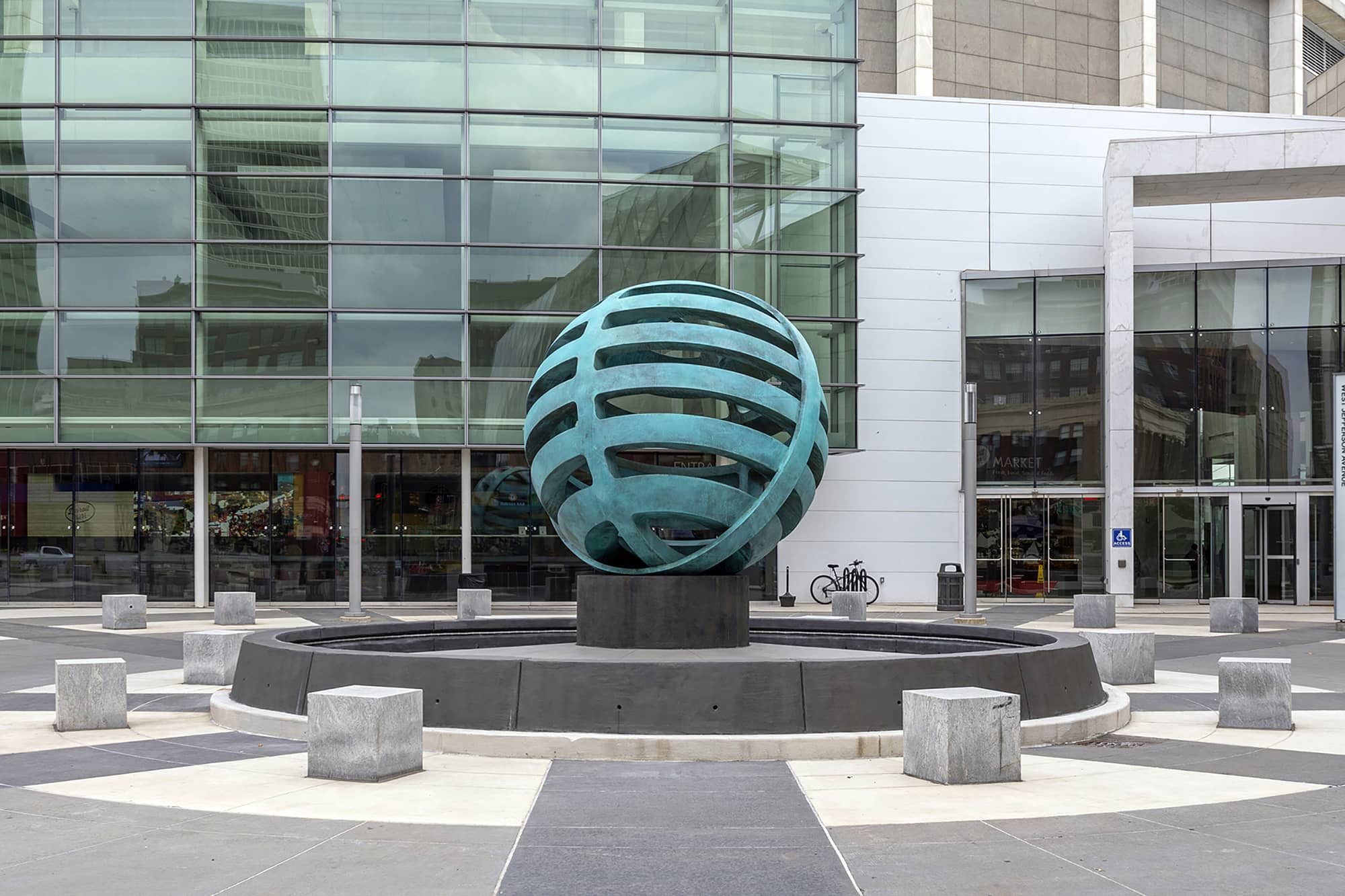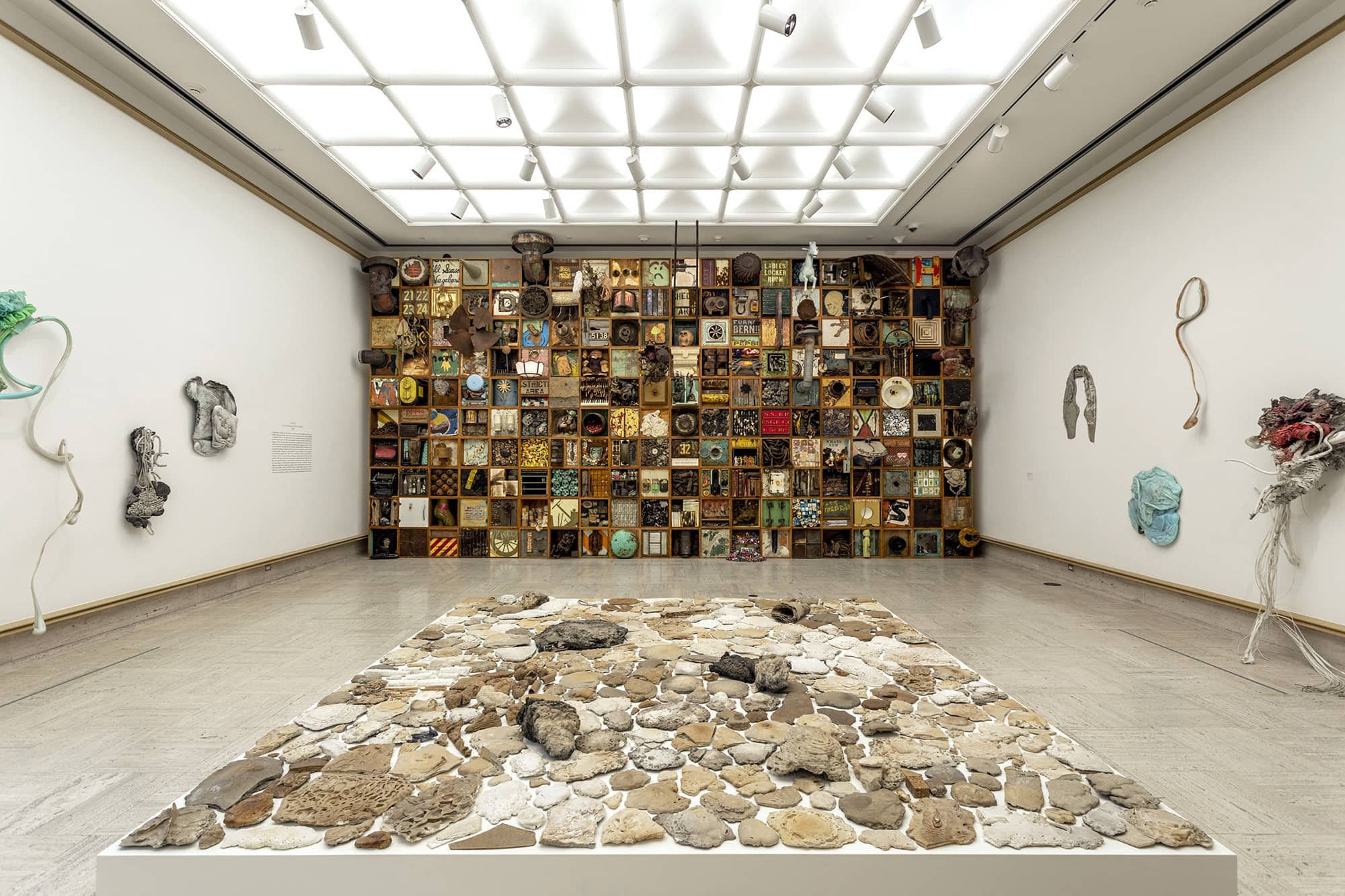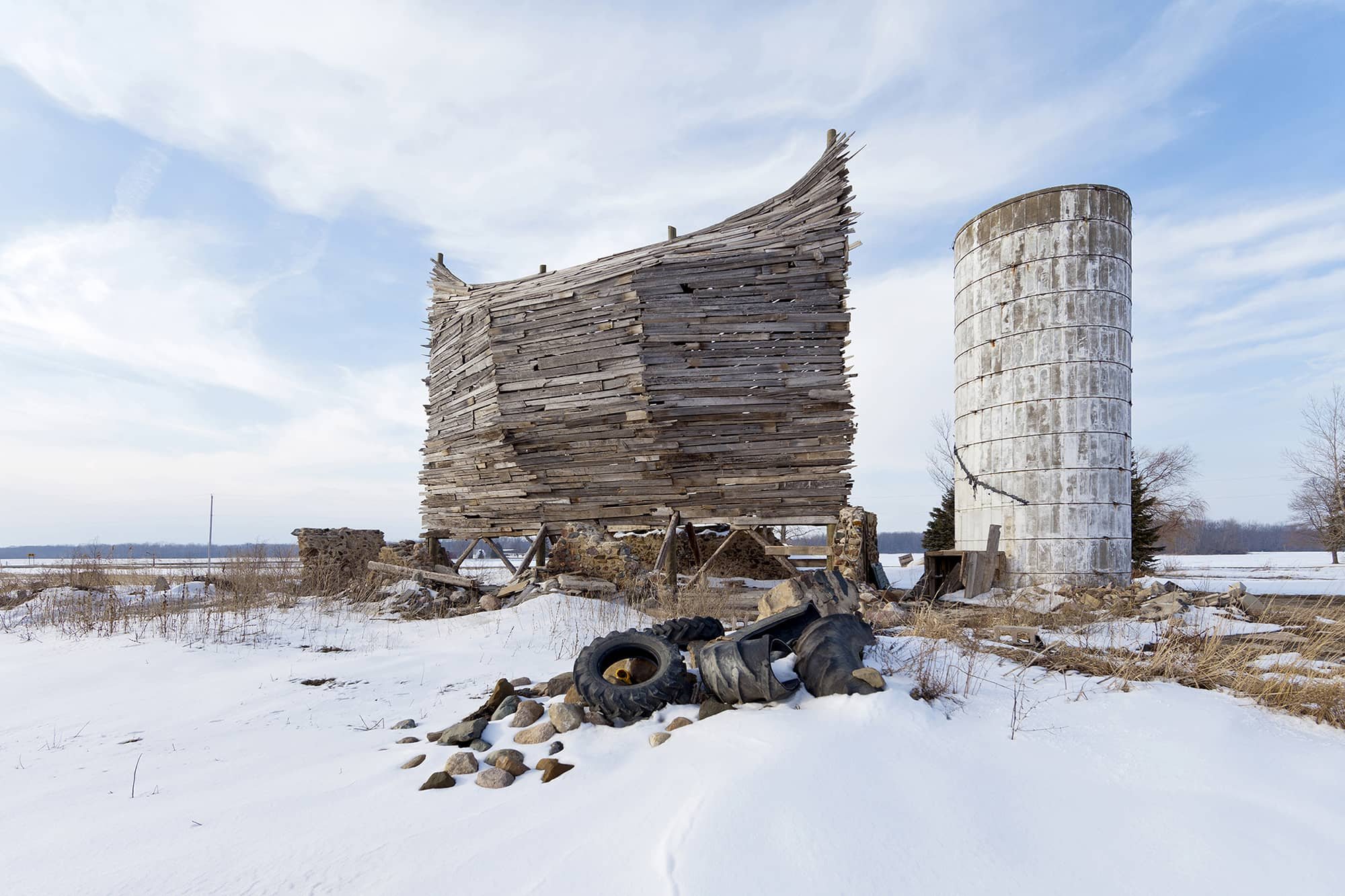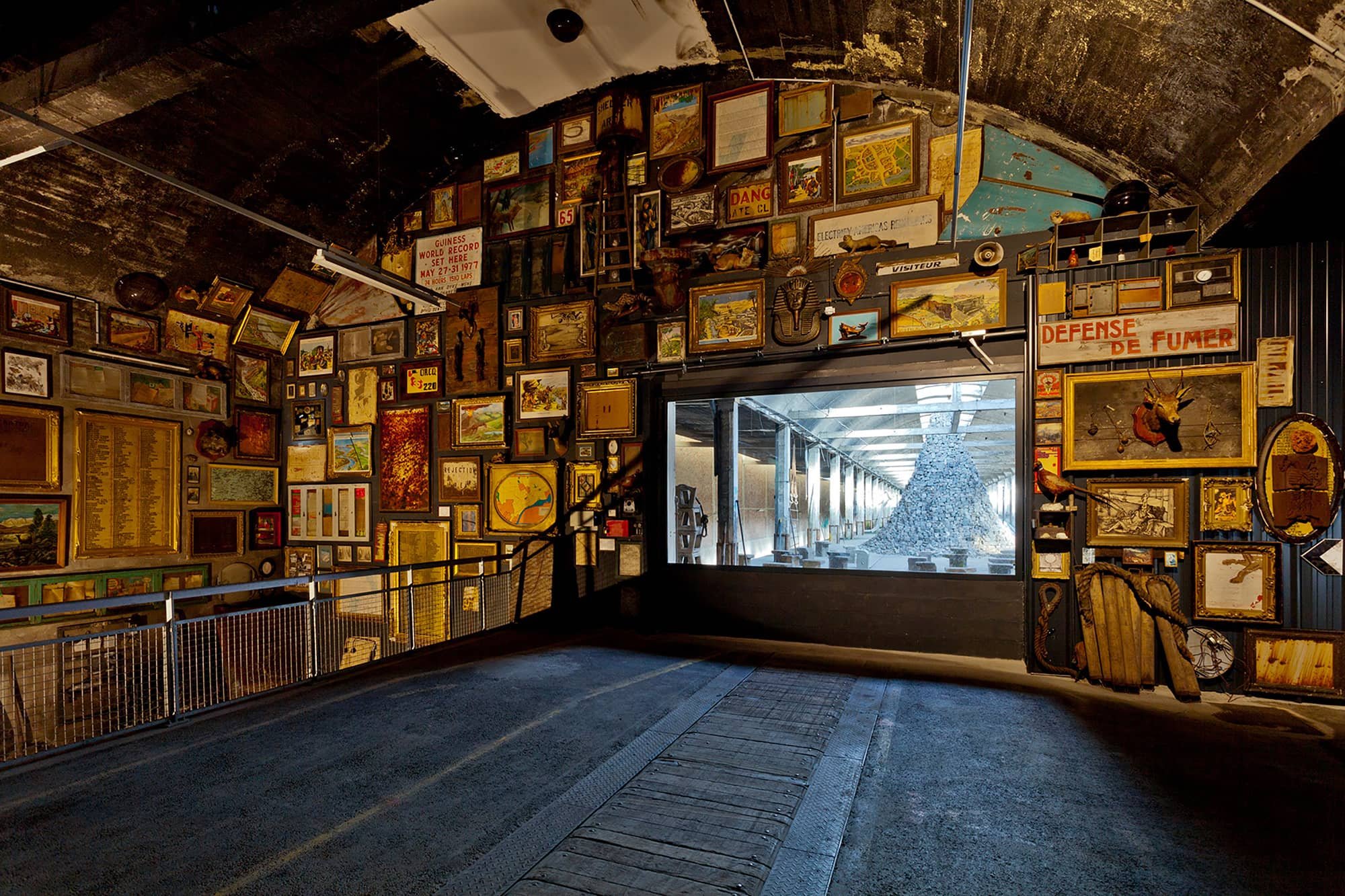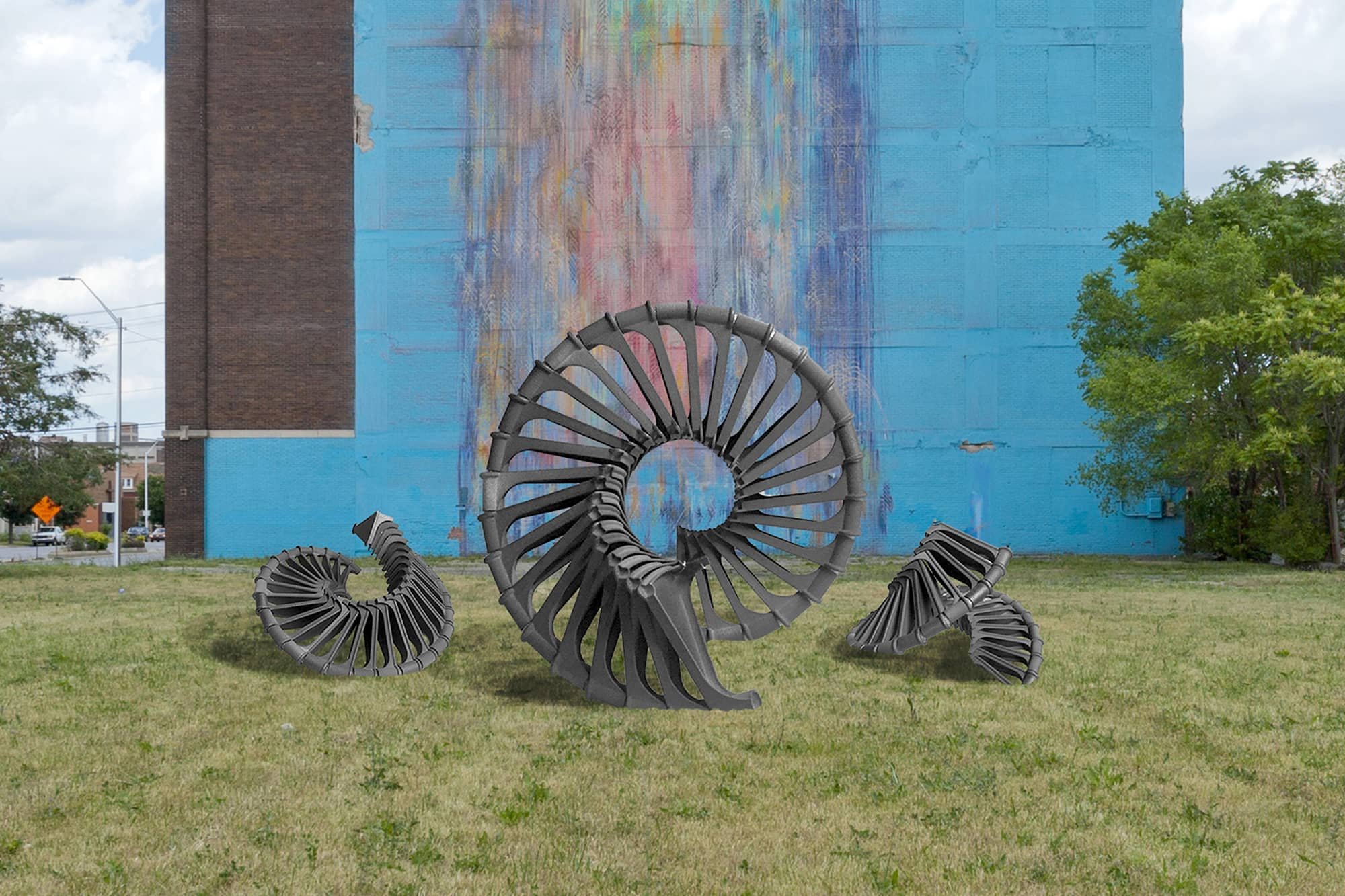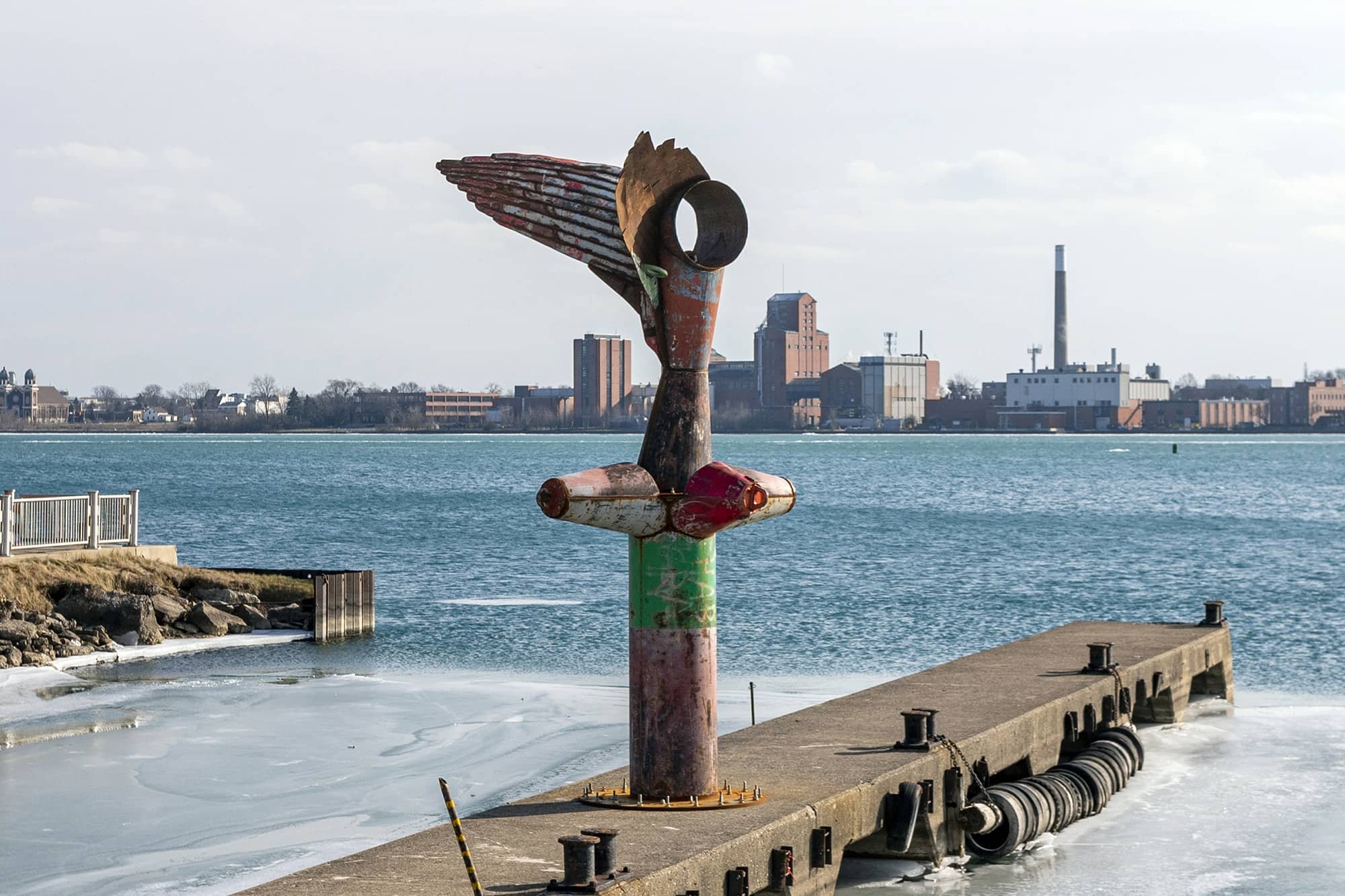Artist Scott Hocking
Congratulations to Scott Hocking for earning his place as a Finalist in the Boynes Artist Award 9th Edition [Professional Artist category]!
Who are you?
I’m a 6th generation Detroiter, living and working as an artist in Detroit, Michigan for 27 years now. I grew up in a working-class family, my mother’s side descended from Polish immigrants, and my father’s side descended from Cornish miners, who immigrated to Michigan’s Upper Peninsula to mine Copper, before heading down to work in the new industries of Detroit. I grew up on a dirt street, near a railroad track, my mother was a deli clerk and my father working in a factory while fixing cars as a side hustle. Going to junkyards with my dad are some of my earliest memories, and definitely shaped my sculptural interests years later. I learned how to use tools at a young age, and was always told I was good at music, drawing, and writing – but I didn’t believe in myself, and coming from my background, I didn’t think a career in the arts was possible. So, it took me a long time to come around and give art a shot. Specifically, I got into a car accident when I was 21, and it changed the course of my life. I enrolled in the Detroit College for Creative Studies soon afterwards, and the rest is history. My childhood of working with my father and learning to use all kinds of tools naturally led me to working in 3D, and I found myself wanting to translate most every idea I had through sculpture.
“Floating Citadel”
Cast Bronze, Stainless Steel, Concrete
By Scott Hocking
How would you describe your ARTwork?
Site-specific installations and sculptures, photography projects, drawings and videos. But my main focus over the years has been sculptures, which expanded over time into installations and large-scale public works. I love working site-specifically, learning the history of each site, researching, reading, talking to people and really understanding places where I work. So, every site-specific project I create uses whatever materials or mediums seem best for that site. I started out using wasted materials and found objects, coming from a place like Detroit, which was a real goldmine of abandoned buildings and neglected materials fin the 1990s. But nowadays it really all depends on each location and place, and I’m open to using anything from recycled plastics to cast bronze.
Can you discuss the inspiration and thought process behind your Finalist work?
The Reliquary Room is a large-scale, labor-intensive, room-sized installation, chronicling the 300-year history of Detroit through a collection of found objects and mixed-media sculptures. The room is anchored by the RELICS wall, hundreds of wooden boxes that house thousands of eroded man-made objects found throughout Detroit. The work is inspired by my life in Detroit, and decades of observing the beauty that can be found in the cycles of nature visible in a post-industrial city. The installation is also inspired by ideas of scientific taxonomy, archeology, Wunderkammers, and the talismanic qualities of ancient artefacts. I see it as playing with ideas of a natural history museum of the future, based on the how quickly objects from our time become obsolete. And it’s one of many projects where I want to experiment with ways to recycle and re-contextualise wasted materials into objects of beauty and art. This version was constructed for my mid-career retrospective at Cranbrook Art Museum in 2022, and featured 200 RELICS boxes, a 12’ x 12’ plinth covered in hundreds of stalagmites gathered from abandoned cast-concrete structures-turned man-made caves, and dozens of charred abstract plastic forms collected from a derelict former recycling plant.
“Reliquary Room”
200 Wooden Boxes, 1000s of Found Objects, Mixed Media, Stalagmites, Plastic
By Scott Hocking
Can you walk us through the technical steps of creating your Finalist work?
The first steps are just observing and collecting materials over many years. There’s really thousands of objects in there, that I’ve found and gathered from abandoned buildings and locations all throughout Detroit. In the early days, I would walk everywhere, gather objects with a backpack or shopping cart, and push them across town to my studio. For the RELICS wall, it began with a proposal for Detroit’s 300th anniversary, that led to the creation of the hundreds of wooden boxes for that aspect of the work. Creating hundreds of wooden boxes was a huge project in itself: I ordered multiple pallets of ¾ inch medium density fibreboard, cut them into thousands of parts, and spent weeks assembling each of these modular containers alone. It was a great parameter to have, the 18 inch square cubes became pieces of a giant puzzle, each one their own artwork, yet also part of a sculptural painting. When the RELICS wall is installed, it becomes a different site-specific composition each time. For the Reliquary Room, I also created a mosaic of found stalagmites gathered from various abandoned cast-concrete factories in Detroit. The stalagmites were created the same way they happen naturally in caves, except these were made in the man-made caves of post-industrial wastelands. I spent a lot of time during the Covid quarantine of 2020 collecting these stalagmites, which I think of as industrial artefacts from the human “Waste Age.”
“The Celestial Ship of the North”
1890s Barn Wood, Utility Poles, Hardware, Mixed Media
By Scott Hocking
What do you hope to communicate to an audience with your work?
Oh I think I’m ok with whatever people take from my artwork – I kind of like how everyone brings their own baggage to viewing art, and interprets it in their own way. I like to use symbolism and ancient forms that I hope connect with people on some subconscious level, but I also like things to be open-ended enough to allow for everyone to interpret and connect in their own way. I think if people read the wall plaques or my artist statements and get my concepts, that’s awesome. But I’m also just really interested in people having any kind of reaction at all. There’s clearly all kinds of ideas behind my sculptures and installations, but I really love how individual and varied each person’s interpretations can be – I find it really fascinating. I think if there’s one thing I enjoy most, it’s making artworks that snap people out of their realities, if even just for a moment. If someone sees a work of mine and it makes them stop, look, and say “what the fuck is that?,” then I feel like I’ve succeeded.
“Babel”
Stone, Concrete, Railroad Ties, Rope, Steel, Wood, Mixed Media
By Scott Hocking
Can you talk about your biggest learning experience during the process of creating your work?
I think being an artist is all about learning how to navigate around problems and obstacles. Making a large-scale work like the Reliquary Room is like a whole class on problem solving. So I think I learned a lot about patience and working through all of the problems that crop up during large-scale installations and installs through works like the Reliquary Room and RELICS. So many mediums, materials, and techniques are required just to assemble each box in the installation, but the sheer amount of boxes needed made for a great ‘practice makes perfect’ lesson. I can tell you I’ve never used as many wooden shims in an artwork as I have in this one, ha.
“Detail of Cranbrook exhibition”
By Scott Hocking
Can you discuss your biggest success since starting your artistic journey?
I think my first mid-career museum retrospective last year has to be the biggest success. 2022 was an amazing year all around for my career, with a large scale permanent public sculpture being installed in the civic centre of Detroit, and the mid-career retrospective opening at Cranbrook Art Museum, which included dozens of photographs, a handful of large-scale installations, and a 350 catalog chronicling my artwork and writing. It was a huge benchmark in my career, and life as an artist. For me, success is not necessarily defined by fame or wealth; rather, it’s being able to do what you want to do, and survive by it. Last year really put in perspective what I’ve done with my life over the last quarter century. And I was really proud of it. I’m still here, still making artwork, still getting ideas and figuring out ways to make them happen, and I’m still surviving!
Can you share with us the best piece of advice you you wish you had known at the start of your career?
Believe in yourself. Believe in your ideas, no matter what anyone else says. Focus on the work. Don’t let things get to you – don’t let the bad reviews get you down, but also don’t let the good reviews give you a big head. You don’t have to try and do every idea at once – there’s plenty of time. Focus on each project – don’t spread yourself too thin because then no project will get 100%. Some ideas rattle around in my head for years before the time is right to fully develop them. Keep pushing. Keep working on things that get you excited. Learn new things till the day you die. We all know the bitter artist, who wishes they would have had more success, and hates those that got it. Don’t become the bitter artist! I think these are all things I learned over the years, either from teachers or from life experience. Just keep working and you’ll always learn something, and even re-learn a few lessons you forgot.
“Nautilus concept sketch”
By Scott Hocking
As a finalist, do you have any advice for artists who want to submit to awards, competitions, residencies, etc.?
I think there are so many factors out of your control when you apply for things, the best thing to do is just keep applying for things. You never know who the jurors are, who the other applicants are, how many people applied, etc. You can’t control the judges likes or interests, and who knows what kind of mood they’re in on any given day. It’s truly a crapshoot, and there’s no harm in submitting and seeing what happens. Also, maybe most importantly, the more you practice applying for things, the better you’ll get at honing your ideas and statements, and understanding your own work for yourself. It’s just another aspect of the artist’s job, in my opinion. In the art world, it’s a healthy practice to get used to rejection and not let it affect your work. Apply, keep working, and move on.
“Nike of the Strait”
Steel, Former Coast Guard Buoys, Marine Enamel
By Scott Hocking
What projects are you working on currently? Can you discuss them?
I'm currently immersed in developing intricate storytelling within my art pieces. While it's in its early stages, I don't have visuals to share yet. But you can stay updated by following my latest work on my Instagram.
Lastly, I like to ask everyone what advice they would give to their fellow artists, what is your advice?
I'd like to share two things. Firstly, discover your strengths and unique talents, and consistently work on enhancing your skills. Secondly, don't hesitate to decline opportunities that don't align with your goals. By doing so, you'll free up time to concentrate on your art and chosen projects.
To view more of Scott Hocking
